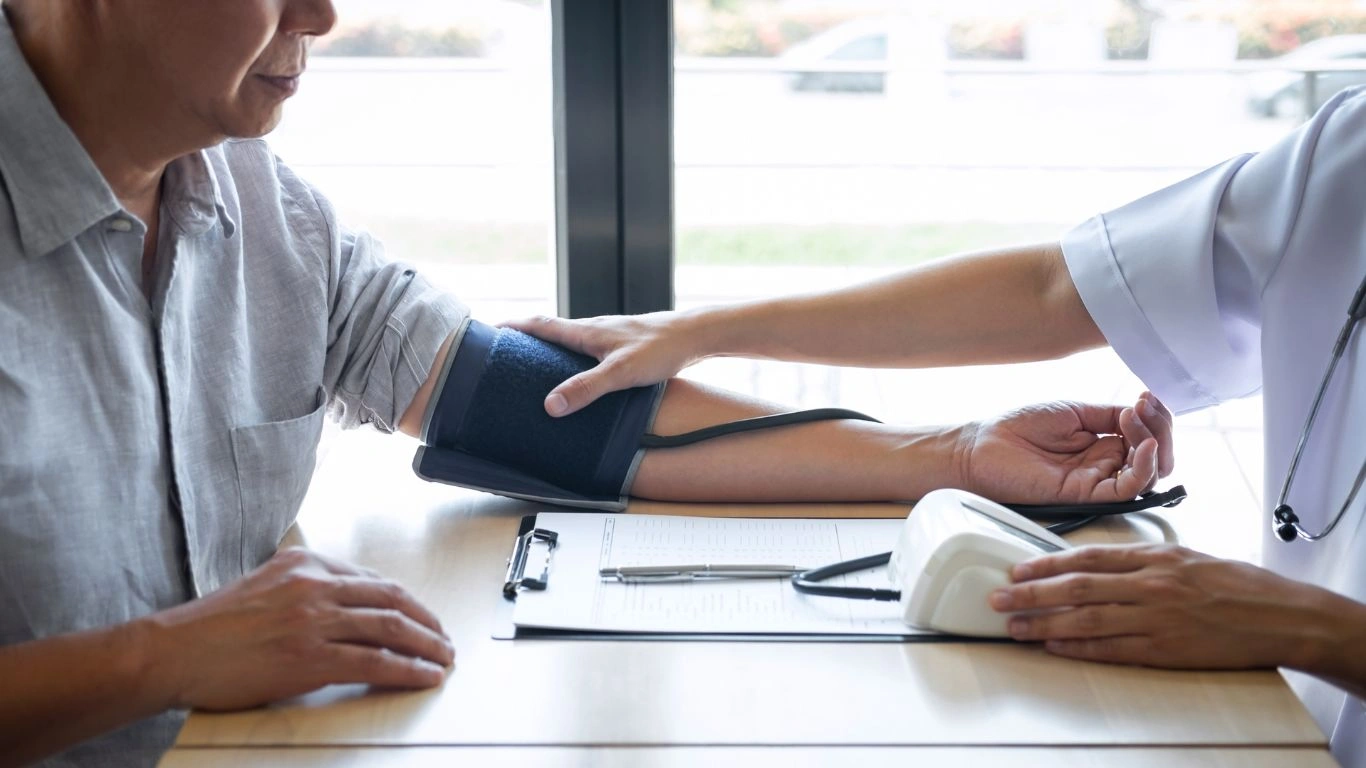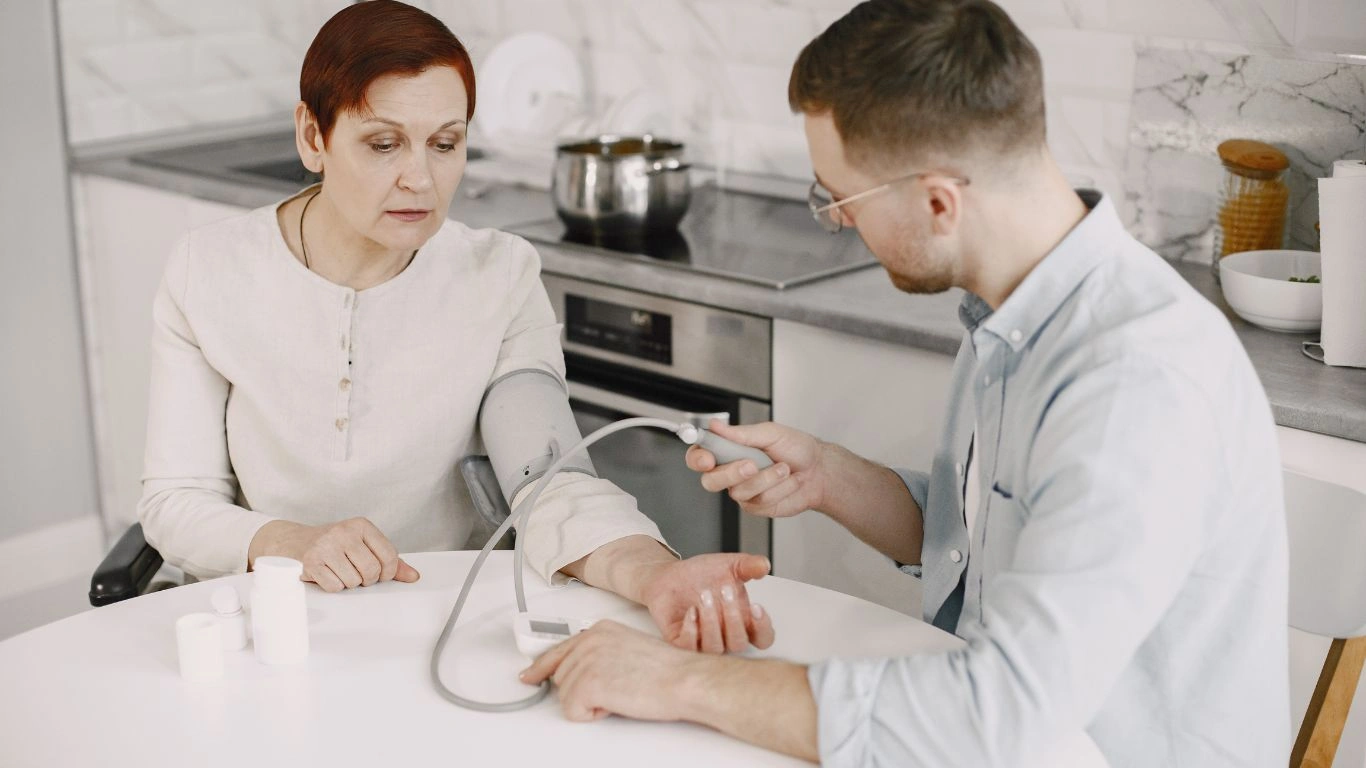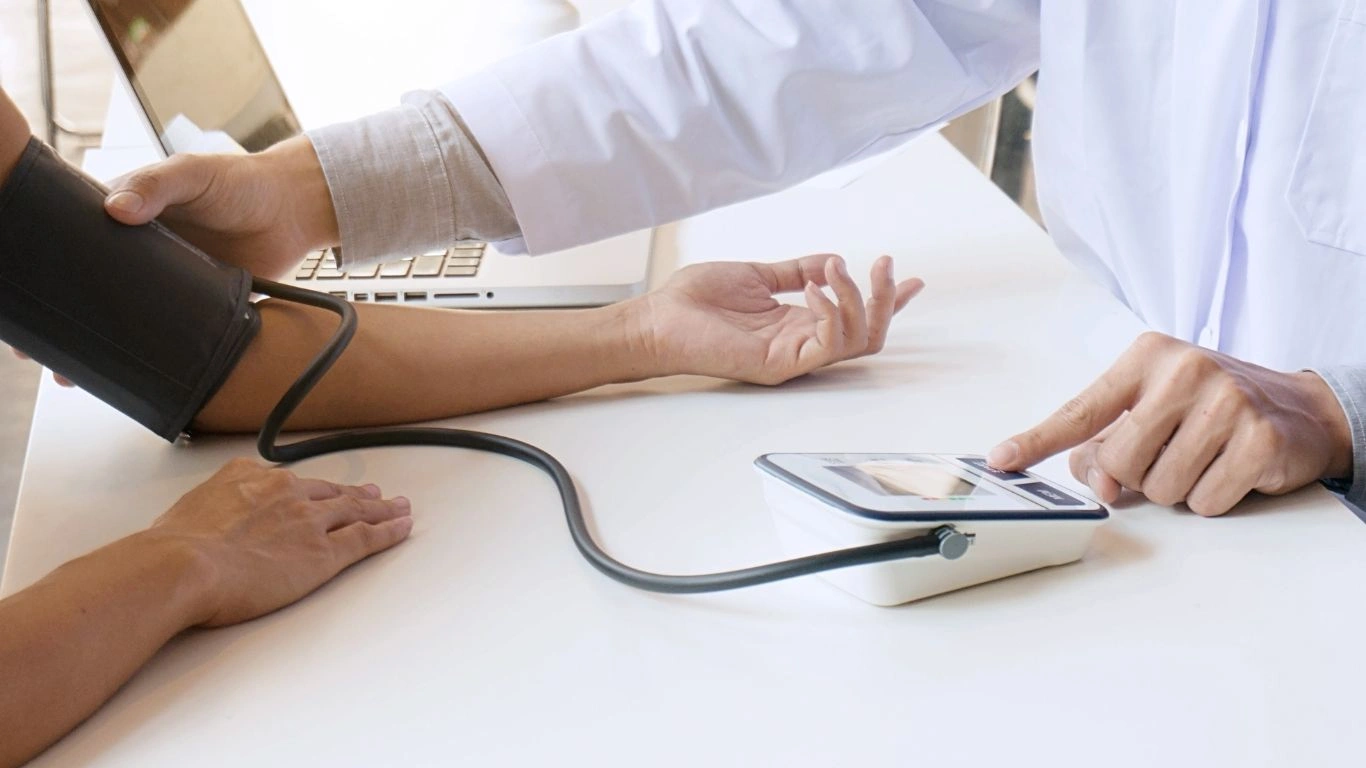How Sunlight Exposure Enhances Blood Pressure Control Naturally
As a physician specializing in hypertension management, I’ve seen firsthand how factors beyond just medication can play a significant role in controlling blood pressure. One of the most surprising but fascinating influences on blood pressure that many people overlook is the effect of sunlight exposure. It’s something we don’t always think about, but research suggests that regular exposure to sunlight might have a profound impact on the regulation of blood pressure.
This connection between sunlight and hypertension management isn’t just a theory—it’s backed by science, and in my practice, it’s something I always consider when treating patients. Let’s dive into how sunlight exposure influences blood pressure control and what that means for those of us working to keep hypertension at bay.
How Sunlight Exposure Impacts Blood Pressure Regulation

When we think of sunlight, the immediate associations that come to mind are warmth, vitamin D, and a boost to mood. However, what many might not know is that sunlight exposure can actually play a pivotal role in regulating blood pressure. Let me explain. The secret lies in a process involving the skin’s exposure to sunlight, which leads to the production of nitric oxide. Nitric oxide is a molecule that helps relax and dilate blood vessels, promoting better blood flow and, ultimately, reducing blood pressure.
One of the most intriguing studies that I’ve come across in my years of practice showed that just 30 minutes of sunlight exposure could significantly lower systolic blood pressure for up to an hour afterward. The reason for this is simple: sunlight triggers the release of nitric oxide, which helps relax the blood vessels. As a result, the heart doesn’t have to work as hard to pump blood through the body, leading to a natural drop in blood pressure. It’s a beautiful and simple connection between nature and our body’s health. But there’s more to the story.
The Science Behind Sunlight’s Effect on Blood Pressure
At this point, you’re probably wondering, “How exactly does sunlight lead to these effects?” Well, when the skin is exposed to ultraviolet (UV) rays from the sun, a chemical reaction occurs. The UV rays cause the skin to release nitric oxide into the bloodstream. Nitric oxide, as I mentioned earlier, helps dilate blood vessels, which lowers vascular resistance and, as a result, reduces blood pressure.
What’s even more interesting is that the effect of sunlight on blood pressure doesn’t necessarily require a long amount of time in the sun. While extended exposure can lead to more substantial effects, even brief periods of sunlight exposure—about 10 to 30 minutes—are enough to trigger the release of nitric oxide. And no, this doesn’t mean you need to lie out in the sun for hours. In fact, moderate exposure can be just as effective, and it’s something I frequently recommend to my patients as part of their hypertension management routine.
It’s also worth mentioning that sunlight’s influence isn’t limited to just one specific time of day. While many people associate the best time for sun exposure with early mornings or late afternoons to avoid the intense midday heat, research has shown that UV rays at any time of the day can still have this beneficial effect on blood pressure. The key is just ensuring that you’re getting enough exposure to activate the body’s natural processes.
The Role of Vitamin D in Hypertension Management
Aside from nitric oxide, another crucial component of sunlight exposure is its role in vitamin D production. Vitamin D, often dubbed the “sunshine vitamin,” is essential for many bodily functions, including bone health and immune system support. However, it also has a link to blood pressure regulation. Numerous studies have suggested that vitamin D deficiency is associated with an increased risk of hypertension, making sunlight exposure an important factor in preventing or managing high blood pressure.
Vitamin D works in several ways to help control blood pressure. It plays a part in the regulation of the renin-angiotensin system, a key mechanism in blood pressure control. When vitamin D levels are low, this system can become imbalanced, potentially leading to higher blood pressure. On the other hand, adequate vitamin D levels help maintain balance within the system, supporting proper blood pressure regulation.
In my practice, I always assess vitamin D levels in patients with hypertension. Those with lower levels often see improved blood pressure readings when their vitamin D levels are optimized through sunlight exposure or supplements. It’s yet another reason why getting some sunlight exposure every day—while being mindful of skin protection—is so important for overall health.
The Practical Side of Getting Sunlight for Blood Pressure Control
So, now that we understand how sunlight can influence blood pressure, the next question is: how can we practically incorporate this into our daily routines? In my experience, many patients are surprised to learn that it doesn’t take much effort to gain the benefits of sunlight for blood pressure control. It doesn’t require spending hours in the sun or even intentionally trying to tan. Simply getting outside for a daily walk or enjoying some outdoor activities during the day can make a big difference.
For those of us in urban environments or areas with long winters, it might seem challenging to get enough sunlight. However, even on cloudy days or during the colder months, sunlight exposure can still have benefits. A 15- to 20-minute walk outside, ideally around midday when UV rays are more direct, can help stimulate the production of nitric oxide and vitamin D. If direct sunlight is limited, consider supplementing your exposure with a vitamin D supplement, which can also support healthy blood pressure levels.
Sunlight and Stress: A Holistic Approach to Blood Pressure Control
Another aspect to consider when thinking about how sunlight exposure influences blood pressure is its impact on stress levels. As a physician, I can’t stress enough how much stress contributes to hypertension. We all know that chronic stress can elevate cortisol levels, which in turn raises blood pressure. Interestingly, sunlight exposure has been shown to help lower cortisol levels and improve mood, further aiding in blood pressure management. By spending more time in the sun, we not only get the physical benefits of sunlight, like nitric oxide and vitamin D, but we also experience a boost in serotonin—our body’s natural “feel-good” hormone. This holistic approach of managing stress, mood, and blood pressure with sunlight is something I’ve seen work time and time again with my patients.
Understanding the Connection Between Sunlight, Nitric Oxide, and Blood Pressure

As we wrap up this part of the discussion, it’s important to recognize that the connection between sunlight exposure and blood pressure is more than just a simple anecdote—it’s a scientific reality. Whether you’re spending time outdoors to soak up the sunshine or making sure your vitamin D levels are where they need to be, the benefits are clear. In the next section, we’ll explore even more about the ways sunlight can contribute to better cardiovascular health and practical tips for incorporating sunlight into your daily routine. Stay tuned!
Maximizing Sunlight Exposure for Optimal Blood Pressure Control

In my years of managing patients with hypertension, I’ve come to realize that sunlight exposure isn’t a one-size-fits-all solution. Sure, sunlight can help lower blood pressure, but how much and how often? It all depends on a number of factors, including where you live, your skin type, and even the time of year. Let’s break down some of the best ways to maximize your exposure to sunlight to get the blood pressure benefits we’ve been talking about so far.
How Long Should You Spend in the Sun?
As we’ve discussed earlier, even a short burst of sunlight can trigger the production of nitric oxide and vitamin D, helping lower blood pressure. But how much sunlight do you actually need to see these benefits? Based on my experience and research, 10 to 30 minutes of sun exposure a few times a week is typically enough to make a noticeable difference. This doesn’t mean you need to be outside for hours at a time—moderation is key. Too much sunlight can lead to skin damage and other health issues, so it’s about finding a sweet spot that works for you.
In general, the amount of sunlight you need will depend on several factors:
- Location: If you live closer to the equator, you’ll benefit from stronger sunlight year-round. In more northern or southern regions, sun exposure may be limited, especially during the winter months.
- Skin Tone: People with lighter skin tend to produce vitamin D more quickly than those with darker skin. So, if you have fair skin, you may need less time in the sun to reap the benefits.
- Time of Day: UV rays are strongest when the sun is directly overhead, typically around midday. This is the best time for getting the most benefit from sunlight exposure.
Remember, it’s not about overexposure. A brief daily walk in the sun can often do the trick—just long enough to activate those beneficial mechanisms without risking skin damage.
What About Sunscreen?
As much as we love the idea of soaking up some sun, I always remind my patients to be mindful of skin protection. Sunscreen is essential to avoid the harmful effects of UV radiation, like premature aging and, more importantly, skin cancer. The good news is that a small amount of direct sunlight for a short period, especially during non-peak hours (before 10 a.m. or after 4 p.m.), can still be beneficial for blood pressure regulation. But if you’re going to be outside for longer periods, you should definitely apply sunscreen to protect your skin.
If you’re concerned about balancing the benefits of sunlight with skin protection, consider timing your outdoor activities around the earlier or later parts of the day, when the sun’s rays are less intense. Also, try wearing a hat or protective clothing to shield your face and neck, while still allowing your arms and legs to benefit from the sun’s rays.
Sunlight Exposure During the Winter Months

Winter can be a tough season when it comes to sunlight exposure, especially if you live in a region with long, cold winters. The days are shorter, and sunlight is often weaker, which can leave you feeling deprived of its blood pressure-boosting benefits. But don’t worry—there are still ways to get the benefits of sunlight, even during the colder months.
If you’re finding it hard to get outside for your daily dose of sunshine, consider these tips:
- Try to spend time outdoors whenever possible: Even on cold days, try to step outside for a walk or just sit in a sunny spot for 10-15 minutes. The sunlight may be weaker, but you can still absorb enough to stimulate nitric oxide production and vitamin D synthesis.
- Use light therapy boxes: These are particularly popular for managing seasonal affective disorder (SAD), but they can also provide the benefits of natural sunlight exposure, especially during the darker months. A 20- to 30-minute session in front of a light therapy box could help regulate your blood pressure and lift your mood.
- Increase indoor light: On particularly gloomy days, try to maximize your exposure to natural indoor light. Sitting near windows that let in sunlight or using light fixtures that mimic sunlight can also help trigger some of the benefits we discussed.
Remember, even in winter, just a few minutes of sunlight exposure can go a long way in maintaining healthy blood pressure levels. So, get outside when you can and use these tricks to make the most of what little sunlight you can catch!
Sunlight and Your Overall Cardiovascular Health

The benefits of sunlight for blood pressure go far beyond just lowering those numbers. Regular, moderate sunlight exposure has also been linked to improved overall cardiovascular health, including better circulation and heart function. For example, nitric oxide production isn’t just beneficial for blood pressure—it also helps enhance blood flow, which can support heart health and reduce the risk of cardiovascular diseases.
As someone who manages hypertension on a daily basis, I’ve seen that patients who incorporate more outdoor activities into their routines, even if it’s just walking in the park or sitting outside for lunch, often report feeling better both physically and mentally. It’s not just about the physical effects of sunlight; it’s also about the overall sense of well-being it can bring. Less stress, more energy, and better cardiovascular function are all part of the package.
In addition to lowering blood pressure, sunlight exposure can also help regulate sleep patterns. Getting enough sunlight during the day helps the body produce melatonin, the hormone that signals to your brain that it’s time to wind down. Better sleep means better stress management, which in turn helps with blood pressure control. So, it’s a wonderful cycle: sunlight exposure lowers blood pressure, helps with sleep, and reduces stress—all of which help maintain a healthy heart and overall well-being.
From a holistic perspective, sunlight is a natural tool that works with the body to enhance cardiovascular health. As you start incorporating more sunlight into your life, remember that it’s just one part of a comprehensive approach to hypertension management. Proper diet, regular exercise, stress reduction, and, when necessary, medication, all play important roles. But sunlight is a simple, natural way to help keep your blood pressure in check without relying solely on pills.
Practical Tips for Integrating Sunlight Exposure Into Your Lifestyle

Now that we’ve covered the science behind sunlight’s positive effects on blood pressure, and how to get the most out of it, let’s talk about practical ways to integrate sunlight exposure into your daily routine. As someone who has worked closely with patients dealing with hypertension, I know that implementing small but consistent changes is often the best way to see lasting results. Here are some tips that I’ve found really work for those looking to get the most out of sunlight exposure without overdoing it.
Start Small and Build It Into Your Routine
If you’re not used to spending time outside, don’t worry about trying to change everything at once. I recommend starting with small, manageable chunks of sunlight exposure each day. Begin by stepping outside for 10 to 15 minutes during your lunch break, or spend some time outdoors in the early morning or evening when the sun is not at its peak intensity. Even just these small changes can have a noticeable impact on your blood pressure over time.
Consistency is key. I’ve found that my patients who commit to a daily routine of outdoor activities, whether it’s a short walk, gardening, or just sitting on the porch, report feeling more relaxed, less stressed, and have even noticed improvements in their blood pressure readings. You don’t have to make drastic changes—just incorporate small sun-filled moments throughout your day to keep your blood pressure in check.
Get Creative with Sunlight Exposure
Life can get busy, and some days, it might seem impossible to carve out time to bask in the sun. But don’t let that stop you! You can get creative about when and where you get your sunlight. For instance, consider:
- Taking your meetings or phone calls outside: If you’re working from home, try stepping outside while you take a call or have a meeting. This is a simple way to squeeze in some sunlight without disrupting your schedule.
- Outdoor workouts: Instead of hitting the gym, try taking your exercise routine outside. Whether it’s a walk, jog, yoga session, or even stretching in the park, it’s a great way to boost your mood and your blood pressure levels.
- Enjoying your morning coffee outside: Try making it a habit to sit outside for your morning coffee or tea. Even if it’s just for 10-15 minutes, this quiet time in the sun can provide a calming, stress-relieving effect.
It’s all about finding ways to incorporate small moments of sunshine throughout your day, so you don’t feel like it’s an added chore. You’ll be surprised at how these little changes add up and improve your blood pressure over time.
Consider Sunlight as Part of a Holistic Health Plan
It’s essential to remember that sunlight exposure is just one piece of the puzzle when it comes to managing hypertension. While it’s an incredibly beneficial tool, it should be combined with other healthy habits like eating a balanced diet, staying active, managing stress, and getting enough sleep. From my experience, patients who focus on improving their overall lifestyle—rather than relying solely on medication—see the best results.
For example, incorporating a diet rich in potassium and magnesium (which help support healthy blood pressure), exercising regularly, and practicing relaxation techniques like deep breathing or mindfulness can further enhance the positive effects of sunlight. These combined habits create a comprehensive approach that targets multiple aspects of hypertension control.
When Sunlight Exposure Isn’t Enough: Supplementation and Other Considerations

Although sunlight is an amazing and natural way to regulate blood pressure, there are some instances where it may not be sufficient on its own. For people who live in areas with long winters, spend most of their time indoors, or have certain medical conditions, getting enough sunlight exposure can be a challenge. In these cases, it’s important to consider supplementation.
Vitamin D, in particular, plays a crucial role in regulating blood pressure. I’ve had many patients with low levels of vitamin D who saw improvements in their blood pressure after taking vitamin D supplements. While sunlight exposure is the best way to boost vitamin D levels naturally, supplements can be a great alternative if you’re unable to get adequate sun exposure. Just be sure to speak with your healthcare provider before starting any new supplement regimen, as they can help determine the right dosage based on your individual needs.
In some cases, individuals with chronic conditions that affect their blood pressure may need a more comprehensive approach, including medications. As always, I recommend working closely with your healthcare team to develop a personalized treatment plan that incorporates both lifestyle changes, like sunlight exposure, and other necessary interventions.
References
- Impact of Sunlight on Blood Pressure and Hypertension: A Review
- Vitamin D and Hypertension: A Review of Mechanisms
- The Effects of Ultraviolet Light Exposure on Blood Pressure: A Clinical Review
Disclaimer: The information in this article is for general informational purposes only and is not intended to replace professional medical advice, diagnosis, or treatment. Always consult with your healthcare provider before making any changes to your health routine or starting new treatments or supplements. The author is a practicing physician, but this article reflects personal insights and the collective body of knowledge available as of the time of writing.

Dr. Gwenna Aazee is a board-certified Internal Medicine Physician with a special focus on hypertension management, chronic disease prevention, and patient education. With years of experience in both clinical practice and medical writing, she’s passionate about turning evidence-based medicine into accessible, actionable advice. Through her work at Healthusias.com, Dr. Aazee empowers readers to take charge of their health with confidence and clarity. Off the clock, she enjoys deep dives into nutrition research, long walks with her rescue pup, and simplifying medical jargon one article at a time.






